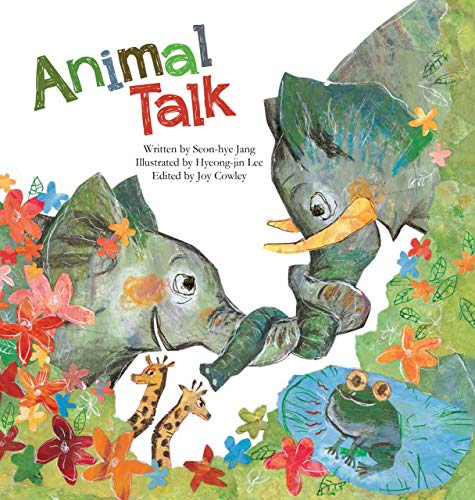-
Animal Communication
Abbie Dunne
Paperback (Capstone Press, Aug. 1, 2016)Simple text and bright photographs explain the concept of animal communication for beginning readers. The book concludes with a simple, kid-friendly activity. M
M
-
Animal Communication
Janet McDonnell
Paperback (Childrens Pr, Sept. 1, 1989)Examines forms of animal communication, including alarm signals, indications of territory, and mating rituals.
-
Animal Communication
Stephen M. Tomecek
language (Chelsea House Publications, March 1, 2009)The act of communicating is not just a human trait. From insects and birds to fish and mammals, most animals use some type of communication to help them get food, find a mate, and protect their territory. This book explores the many different ways in which animals communicate.
-
Animal Communication
Abbie Dunne
Library Binding (Capstone Press, Aug. 1, 2016)Simple text and bright photographs explain the concept of animal communication for beginning readers. The book concludes with a simple, kid-friendly activity. M
M
-
Animal Communication
Stephen M Tomecek
Library Binding (Chelsea House Publications, March 1, 2009)The act of communicating is not just a human trait. From insects and birds to fish and mammals, most animals use some type of communication to help them get food, find a mate, and protect their territory. This book explores the many different ways in which animals communicate. V
V
-
How Animals Communicate
Bil Gilbert
Hardcover (Random House (Merchandising), June 15, 1966)Presents research and theories about communication between animals and between men and animals, concentrating on bees, birds, dogs, apes, and dolphins.
-
Animal Communication
Abbie Dunne
Paperback (Capstone Global Library Ltd, Aug. 1, 2017)Explains the concept of animal communication for beginning readers. This book concludes a simple, child-friendly activity. M
M
-
Animal Communication
Janet McDonnell
Library Binding (The Childs World Inc, June 1, 1998)Examines forms of animal communication, including alarm signals, indications of territory, and mating rituals O
O
-
Communicate! Animal Talk
Dona Herweck Rice
eBook (Teacher Created Materials, May 1, 2018)What is all the talk about? Animal talk! Animals talk with sounds, of course. But they talk with their bodies, too! Featuring TIME For Kids content, this nonfiction eBook introduces young learners to the different ways that animals communicate. With simple, repetitive sentences that foster word recognition skills and engaging photographs that support the text-to-image relationship, this engaging title builds foundational skills to support early childhood literacy. Text features include a glossary to increase understanding and build vocabulary. E
E
-
Animal Talk: Animal Communication
Seon-hye Jang, Hyeong-jin Lee
Paperback (Big & Small, Jan. 1, 2017)The story reveals the different ways that animals communicate with each other and how it differs depending on each species. This helps readers understand and encourages them to think in different perspectives by comparing how various animals mate, mark their territory and fight. N
N
-
Communication
Aliki
Hardcover (Greenwillow Books, April 1, 1993)Discusses the many different kinds of communication and the functions they serve J
J
-
Animal Communication
Phil Gates
Paperback (Cambridge University Press, April 30, 1997)Suitable for children in Year 2 (age 6), Animal Communication is one of nine books from the Cambridge Reading non-fiction strand. This strand has been designed to introduce young readers to information retrieval skills. Animal Communication explains why animals need to communicate, and looks at the variety of ways in which they do so. With the aid of beautiful colour photographs, amusing illustrations and a clear, straightforward text, children read about animals that communicate using sound, colour, movement, smell or light. The book's activity boxes encourage children to try out some different forms of communication for themselves. Cambridge Reading at Key Stage 1 (Years 1 and 2) includes fiction, non-fiction, poetry and plays to offer children a variety of text types, authors and illustrators and provide a firm base for wider reading. N
N